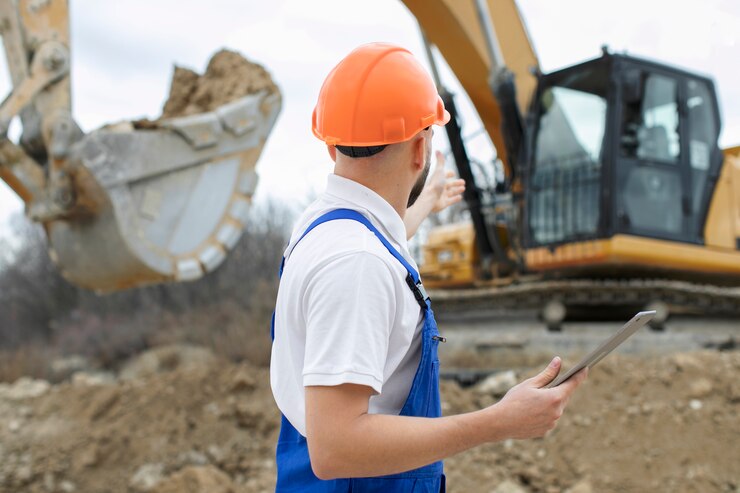13 Sep

Excavation is a vital initial phase in construction that requires meticulous planning and precision to create a solid foundation. It goes beyond simple digging, ensuring safety, stability, and adherence to design standards.
This blog post discusses different excavation techniques, providing insights to help construction professionals enhance project outcomes, minimize risks, and achieve greater efficiency and cost-effectiveness.
Table of Contents
Overview of Different Types of Excavation Techniques
Excavation techniques vary widely, each tailored to specific project requirements and environmental conditions. Understanding the array of available methods is crucial for construction professionals seeking to optimize their approach. The primary types of excavation include topsoil, rock, muck, and trenching—each serving different purposes depending on the project’s needs.
Topsoil excavation focuses on removing the uppermost layer of soil, which is essential for preparing a site for construction or landscaping. Rock excavation, on the other hand, involves breaking and removing solid rock, requiring specialized equipment and expertise, such as hydrovac services like those available in Pocatello. This method is often necessary in mountainous or rocky terrains, where traditional techniques fall short.
Trenching is another common excavation type, used for installing pipelines, cables, and drainage systems. It requires precision and a keen understanding of soil mechanics to prevent collapses. Each technique has its advantages and challenges, and selecting the right one hinges on factors like soil composition, project scale, and environmental impact.
Detailed Exploration of Traditional Excavation Methods and Their Applications
Traditional excavation methods have stood the test of time, providing reliable solutions for various construction challenges. One such method is hand excavation, where laborers use basic tools like shovels and pickaxes. Despite its labor-intensive nature, hand excavation allows for precision in confined spaces or areas with delicate features.
Mechanical excavation, utilizing machinery such as backhoes and bulldozers, offers greater efficiency and speed. These machines are ideal for large-scale projects, where moving significant volumes of earth is necessary. The choice between hand and mechanical excavation depends on project size, budget, and environmental considerations.
Another traditional method is dredging, primarily used in underwater excavation. This technique involves removing sediments and debris from water bodies to create channels or prepare foundations for bridges and piers. Dredging requires specialized equipment and expertise to manage the unique challenges of working in aquatic environments, making it a critical component of coastal and marine construction projects.
Modern Excavation Technologies and Their Benefits
Advancements in technology have revolutionized excavation methods, introducing innovative tools that enhance precision, safety, and efficiency. One such advancement is the use of laser-guided excavation systems, which provide real-time data on depth and alignment. These systems help operators achieve pinpoint accuracy, reducing errors and ensuring the project adheres to its design specifications.
Another modern technology is the use of GPS and GIS in excavation planning and execution. These systems allow project managers to map out excavation sites with high precision, optimizing the use of resources and minimizing environmental impact. By integrating these technologies, construction professionals can streamline operations, reduce costs, and enhance project outcomes.
Robotics and automation are also making their mark in the excavation industry. Autonomous excavators, equipped with AI-driven software, can perform tasks without direct human intervention, increasing safety and efficiency. These technologies represent the future of excavation, offering solutions to challenges that traditional methods cannot address, and paving the way for more sustainable construction practices.
Tips for Choosing the Right Excavation Method for Specific Project Needs
Selecting the appropriate excavation method is crucial for project success, and several factors must be considered. First, assess the site’s soil composition and geological conditions. Conducting geotechnical surveys provides valuable insights into the soil’s behavior, helping you determine whether traditional or modern methods are more suitable.
Budget and timeline constraints also play a significant role in selecting an excavation method. While advanced technologies offer greater efficiency and precision, they may come with higher costs. Balancing these factors with project requirements is essential for making informed decisions that optimize both financial and operational outcomes.
Environmental impact is another critical consideration. Techniques that minimize soil disturbance and reduce waste generation are preferable for sustainable construction practices. Collaborating with environmental consultants can help identify methods that align with your project’s sustainability goals, ensuring compliance with regulations and contributing to long-term ecological preservation.
Conclusion
Now that we have explored the various traditional and modern excavation methods at our disposal, it is evident that each has its unique applications and benefits. Hand excavation remains a viable option for small-scale projects, while mechanical excavation offers speed and efficiency for larger undertakings.


